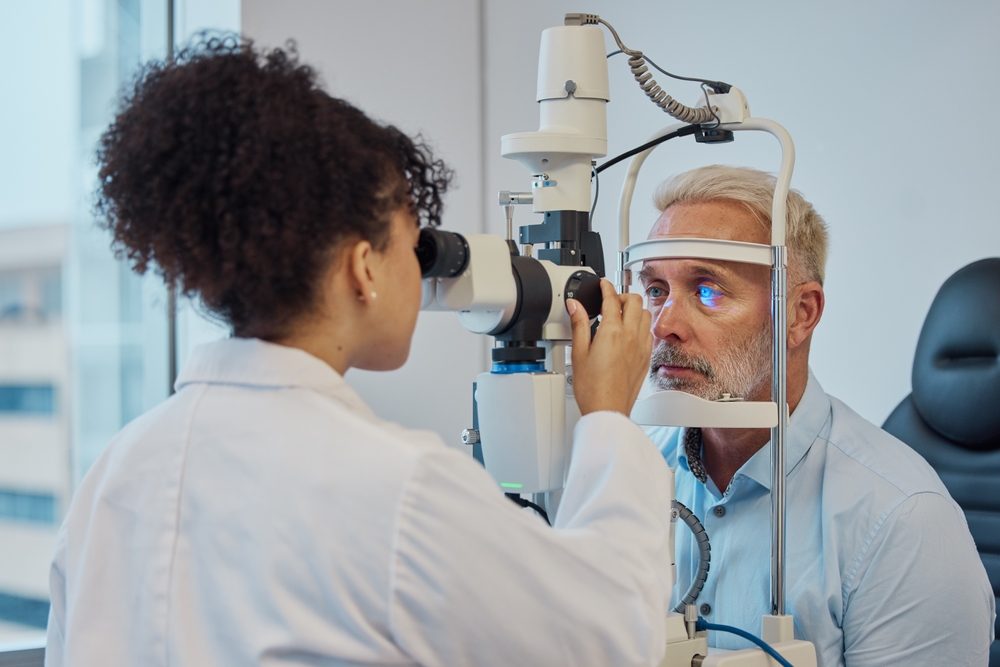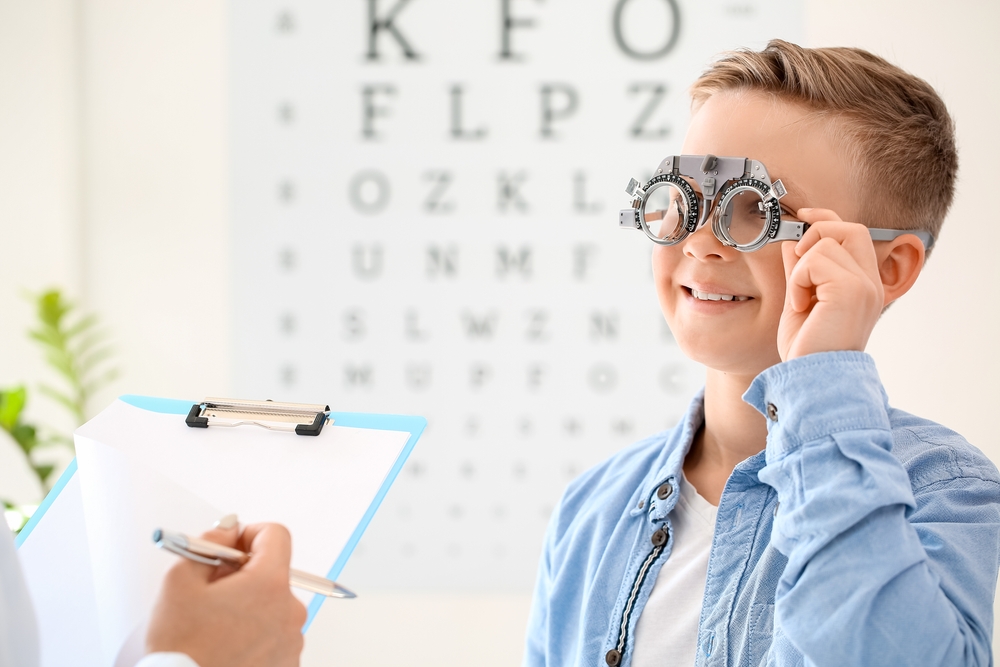Are Annual Comprehensive Eye Exams Really Necessary?
December 27, 2023
If you are not experiencing any problems with your eyes and your vision seems clear, you may wonder if an annual comprehensive eye exam is really necessary. When considering whether you should schedule an appointment, it’s useful to consider an annual eye exam, along with annual physical and bi-annual dental check-ups, as one more way for you to be proactive about maintaining your overall health.
Keep reading to learn more about comprehensive eye exams, including whether or not they are really necessary!
How Often Should I Schedule a Comprehensive Eye Exam?
The American Optometric Association (AOA) recently updated their recommendations for annual eye exams. While they previously recommended bi-annual eye exams for adults between the ages of eighteen and sixty-four, they now say that it is important for these adults to schedule yearly eye exams, even if they have healthy eyes and no vision problems.
Annual comprehensive eye exams serve purposes beyond assessing vision quality. The tests performed during an exam can also detect early signs of both common eye diseases, like cataracts and glaucoma as well as signs of more systemic health problems, like diabetes and high blood pressure.
Certain factors might make it even more important for you to schedule annual eye exams. These factors include:
Age
Because many of the most common eye conditions are a result of aging, people over the age of sixty-five should prioritize annual exams to prevent vision loss as they age.
Family History
 If you have a family history of eye disease or certain other health conditions, including diabetes and high blood pressure, you may have an elevated risk of developing eye disease yourself.
If you have a family history of eye disease or certain other health conditions, including diabetes and high blood pressure, you may have an elevated risk of developing eye disease yourself.
Annual exams can lead to early diagnosis and more effective treatment outcomes.
Chronic Disease
Chronic conditions such as diabetes and hypertension may place you at an increased risk for developing an eye condition that could impact your vision. Both of these diseases can cause pressure buildup which then damages the delicate structures within the eye.
Eye Prescription Changes
Wearing corrective visual aids with an incorrect or outdated prescription can lead to eye strain which may cause symptoms including dry eye, excessively watery eyes, sensitivity to light, and headaches. Annual exams ensure your prescription is up-to-date.
Contact Lens Wearers
An annual eye exam is often required for your eye doctor to continue prescribing your contact lenses. You may need to get an annual eye prescription to order new contact lenses.
Eye Health
If you have a history of eye problems, injuries or past eye surgeries, an annual exam may not be enough to ensure the continued health of your eyes. In these cases, your eye doctor may recommend more frequent exams.
Is it time for you to have an annual eye exam? Schedule an appointment today
Schedule an Appointment
 Should I Schedule Annual Eye Exams for Children?
Should I Schedule Annual Eye Exams for Children?
Children’s eyes can change rapidly, especially in the first six years of life. Without recommended eye exams, they may have vision problems which may go undiagnosed until they have problems in school, like an inability to read a blackboard from a distance.
To protect the health of children’s eyes and the quality of their vision, the AOA recommends that children get a comprehensive baseline eye exam between the ages of six months and twelve months; at least one comprehensive eye exam between the ages of three and five to check for any eye conditions that could have long-term effects; and annual comprehensive eye exams once they start attending grade school.
Schedule an Appointment
What Happens During an Annual Comprehensive Eye Exam?
During a comprehensive eye exam, your eye care provider performs a series of standard tests to check the clarity of your vision and the health of your eyes. These standard tests include:
Visual Acuity Test
A visual acuity test is used to determine how well you can see at multiple distances. If you wear eyeglasses or contact lenses to correct your vision, a visual acuity test checks whether your current eye prescription is still accurate.
During this test, you will be asked to read a chart with lines of letters, of decreasing size, from a distance. You will also be asked to read a similar chart of letters that you hold closer to your face.
If you have trouble reading at a distance or close up, your eye doctor will use an instrument called a phoropter, which contains lenses with different prescriptions, to determine your precise eye prescription.
Visual Field Test
 Your eye care provider uses a visual field test to assess your peripheral, or side, vision. During this test, your provider holds up a finger or other object which you will be asked to follow with only your eyes as it is slowly moved from one side of your face to the other; up and down in front of your face; and then closer to your face.
Your eye care provider uses a visual field test to assess your peripheral, or side, vision. During this test, your provider holds up a finger or other object which you will be asked to follow with only your eyes as it is slowly moved from one side of your face to the other; up and down in front of your face; and then closer to your face.
Color Vision Test
The color vision test checks the accuracy of your vision to correctly distinguish one color from another. Your provider will show you an image composed of colored dots, with certain dots forming a letter or number.
If you are not able to distinguish one color from another, it may indicate that you have a color vision deficiency, also known as color blindness.
Dilated Eye Examinations
The dilated eye examinations are used by your eye care provider to check the physical structures inside of your eyes. These tests let your provider examine your cornea, lens, retina, optic nerve, and the surrounding blood vessels for signs of degeneration or disease.
During a dilated eye exam, your eye care provider will dilate your pupils using special eye drops. Once your pupils have dilated enough, which usually takes fifteen to twenty minutes, your provider is able to look more closely at the structures within your eyes.
The effects of pupil dilation can last a few hours and may cause blurry vision and increased sensitivity to light. The medication used to dilate your eyes generally wears off in four to six hours.
Tonometry Test
The tonometry test, which is mainly used to screen for glaucoma, is used by your provider to measure the pressure inside your eye. During this test, your eye doctor blows a small puff of air directly onto the surface of your eye.
A comprehensive eye exam generally takes about an hour. All of the standard tests performed are completely painless and non-invasive.
If you want to see to it that your vision remains crisp and your eyes stay healthy, annual comprehensive eye exams are essential. Annual eye exams ensure accurate eye prescriptions for the clearest eyesight as well as early diagnosis of eye conditions or diseases that could affect the health of your eyes.
Is it time for you to have an annual eye exam? Schedule an appointment at Advanced Eye Care & Aesthetics in Bel Air, MD, today!



